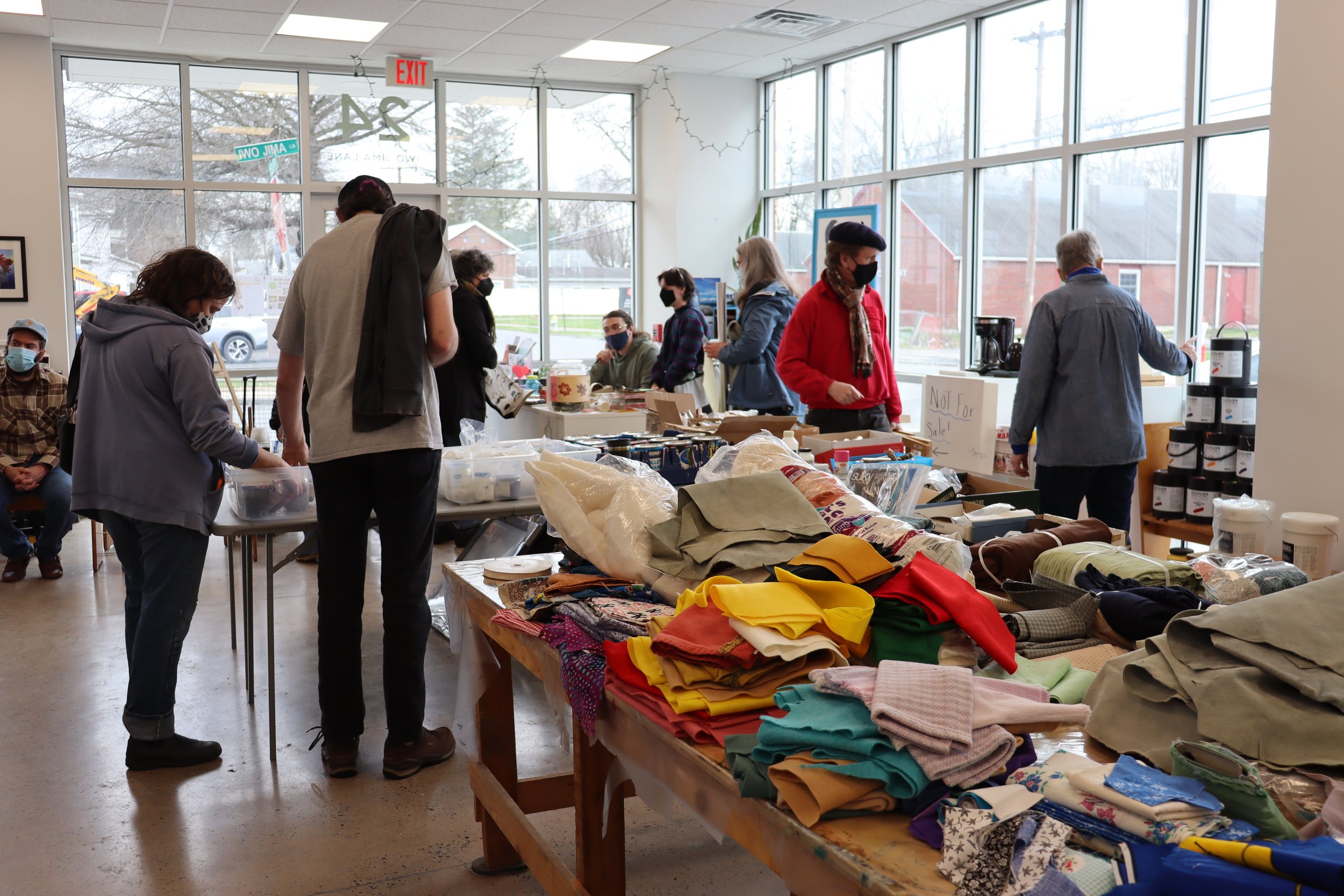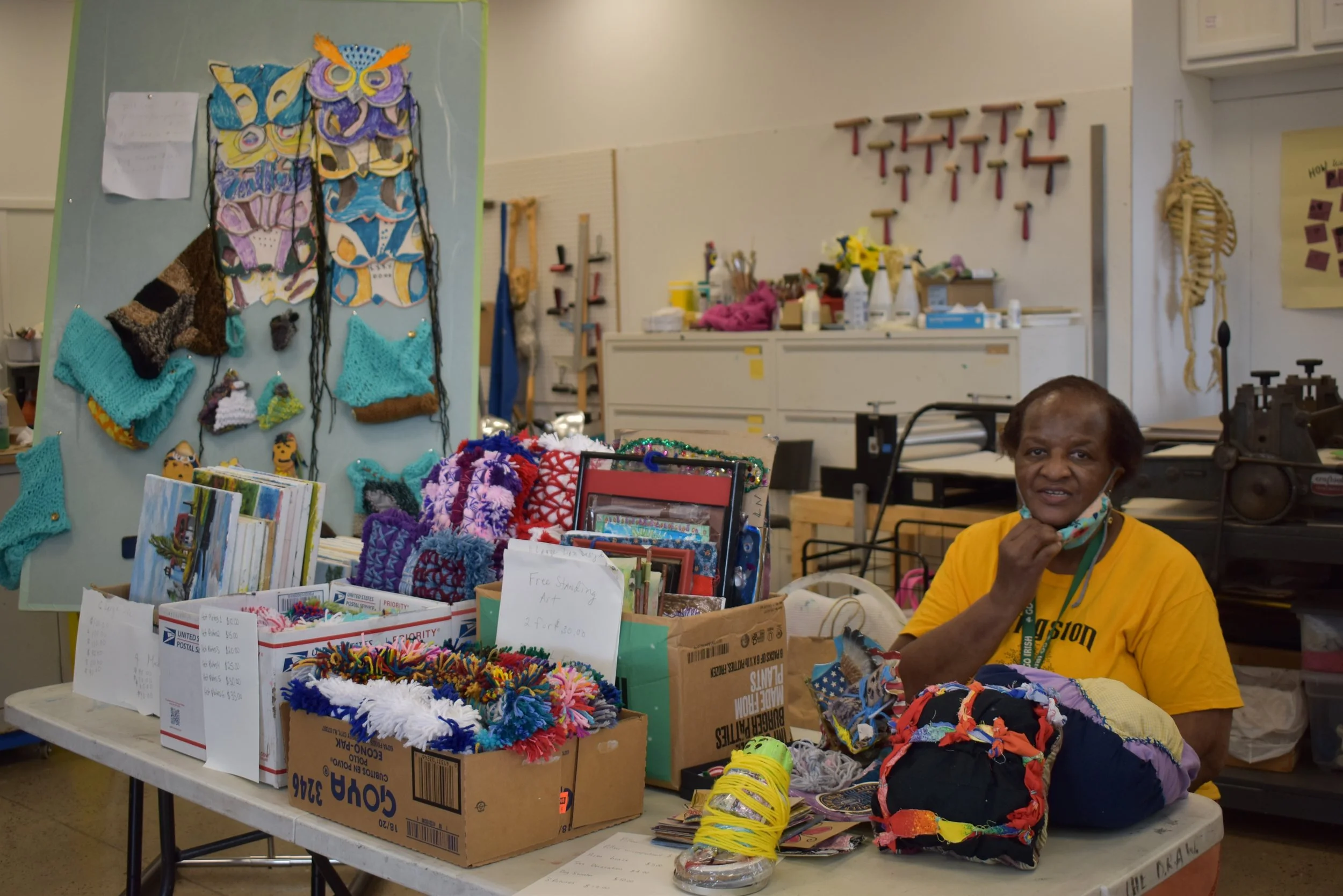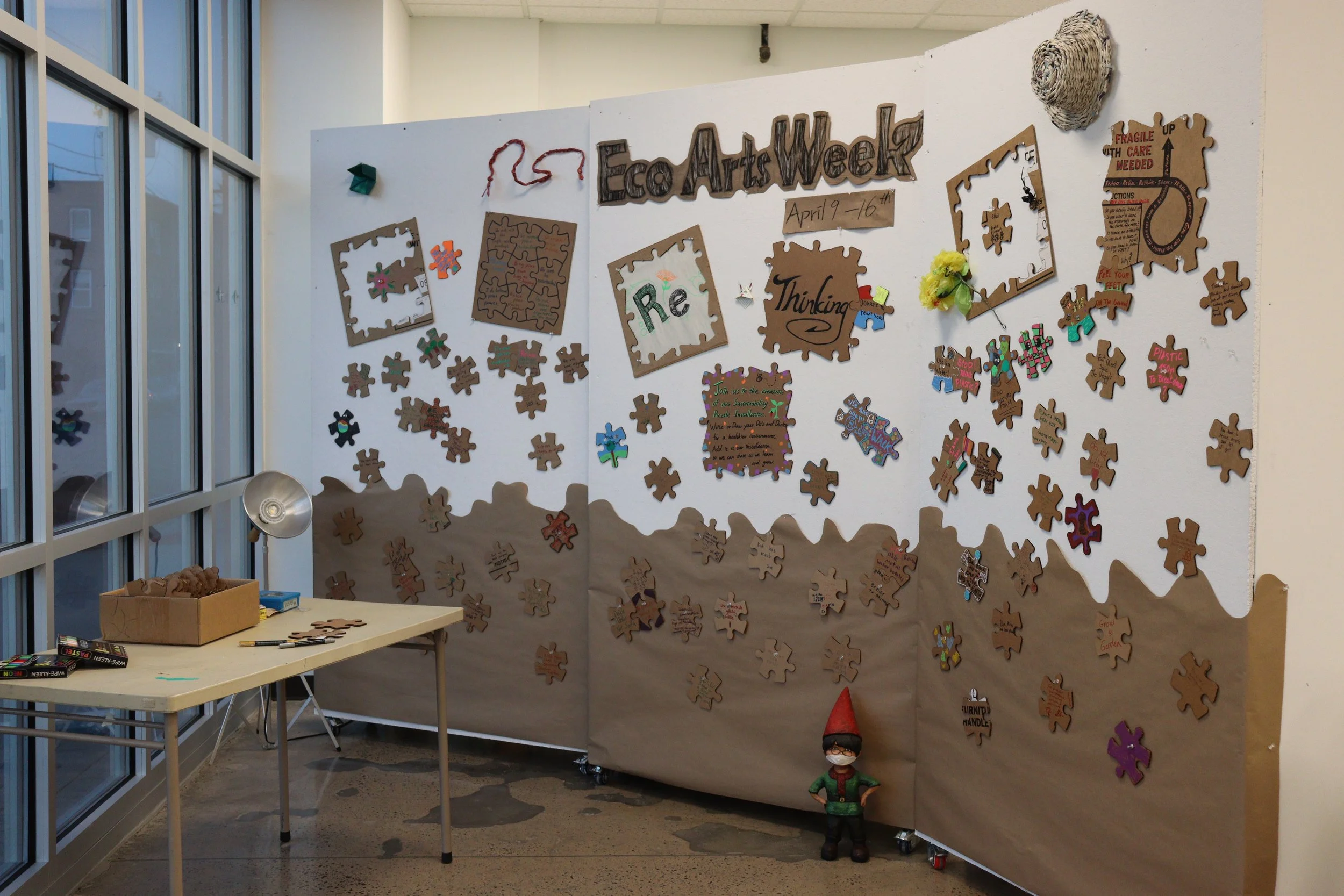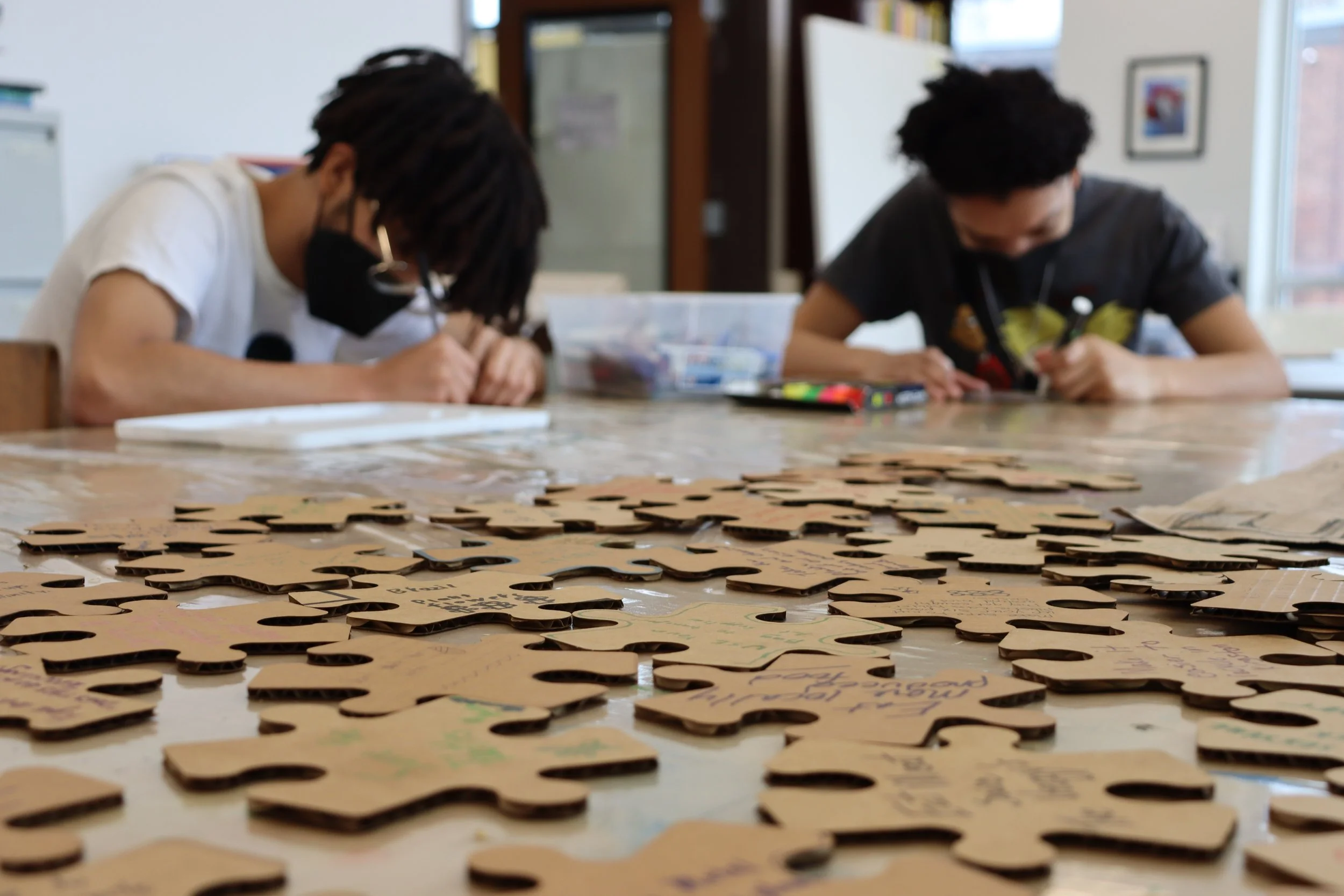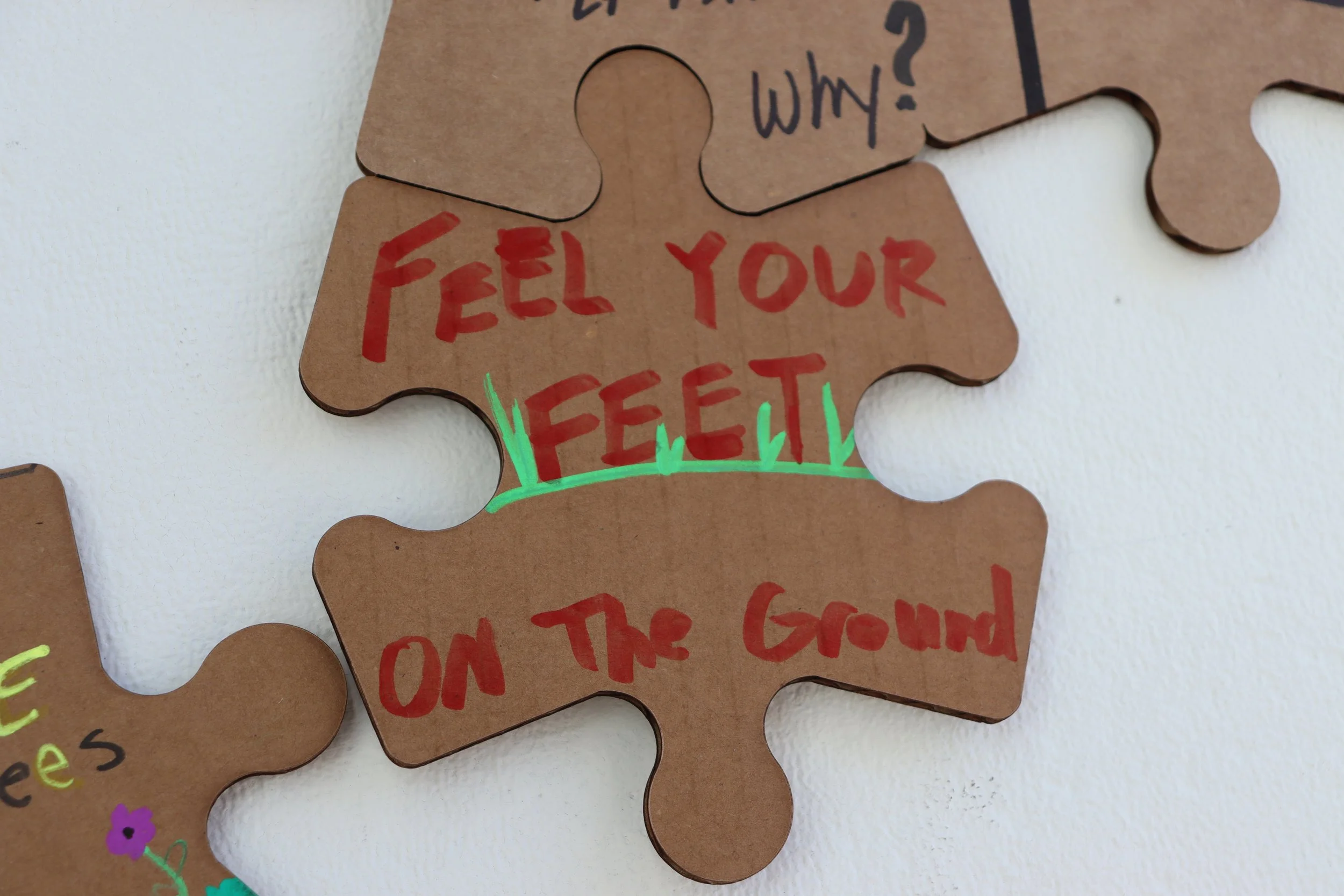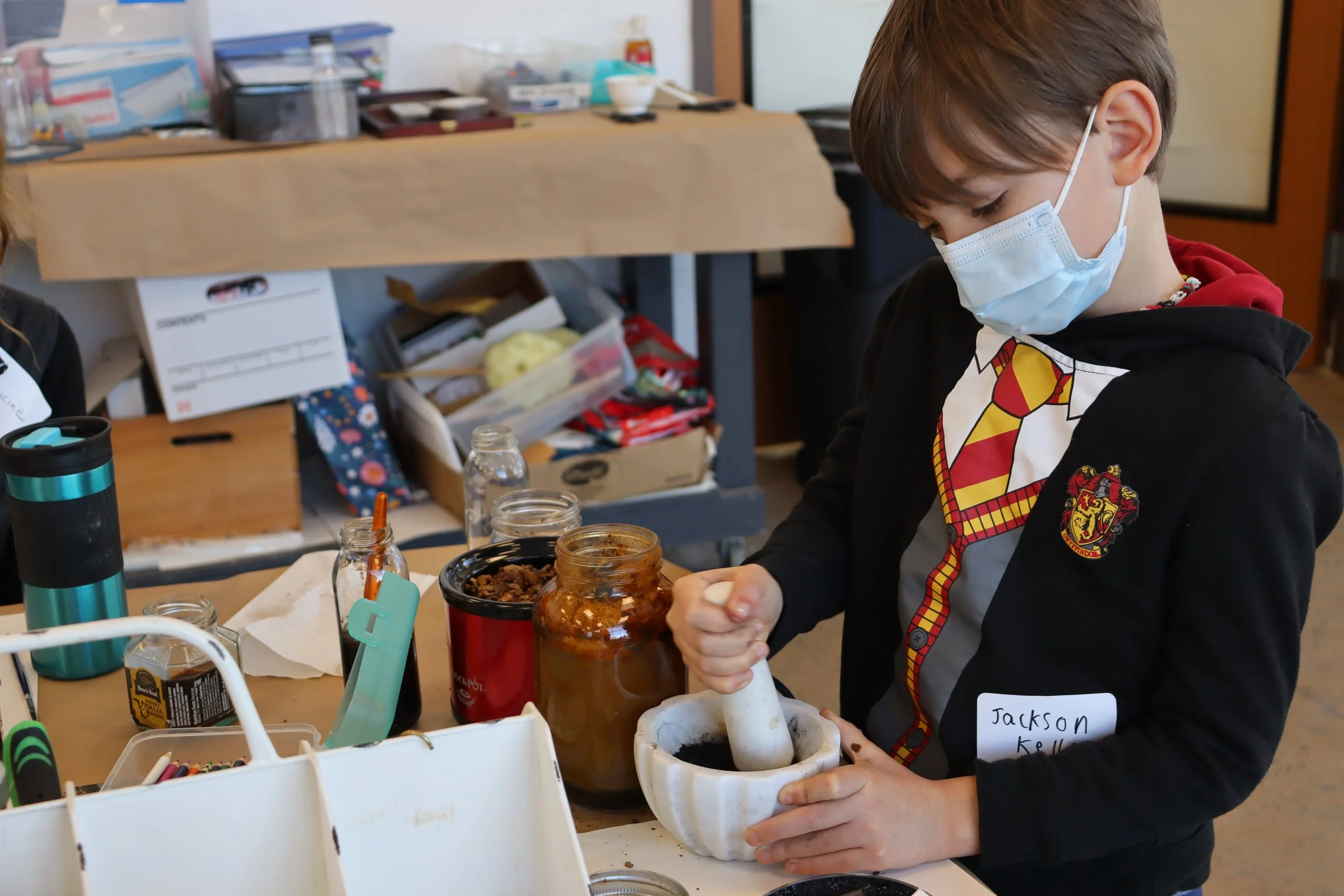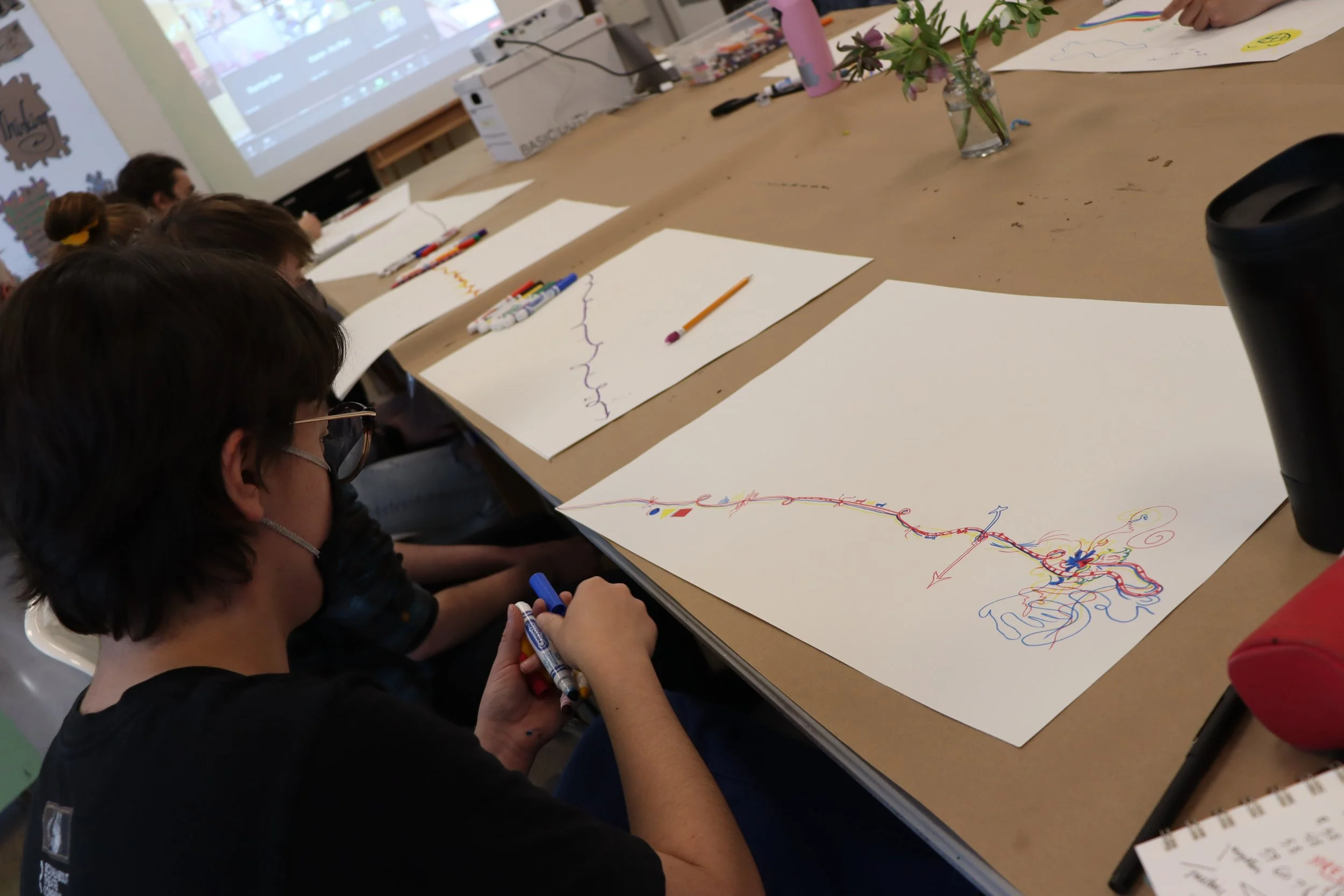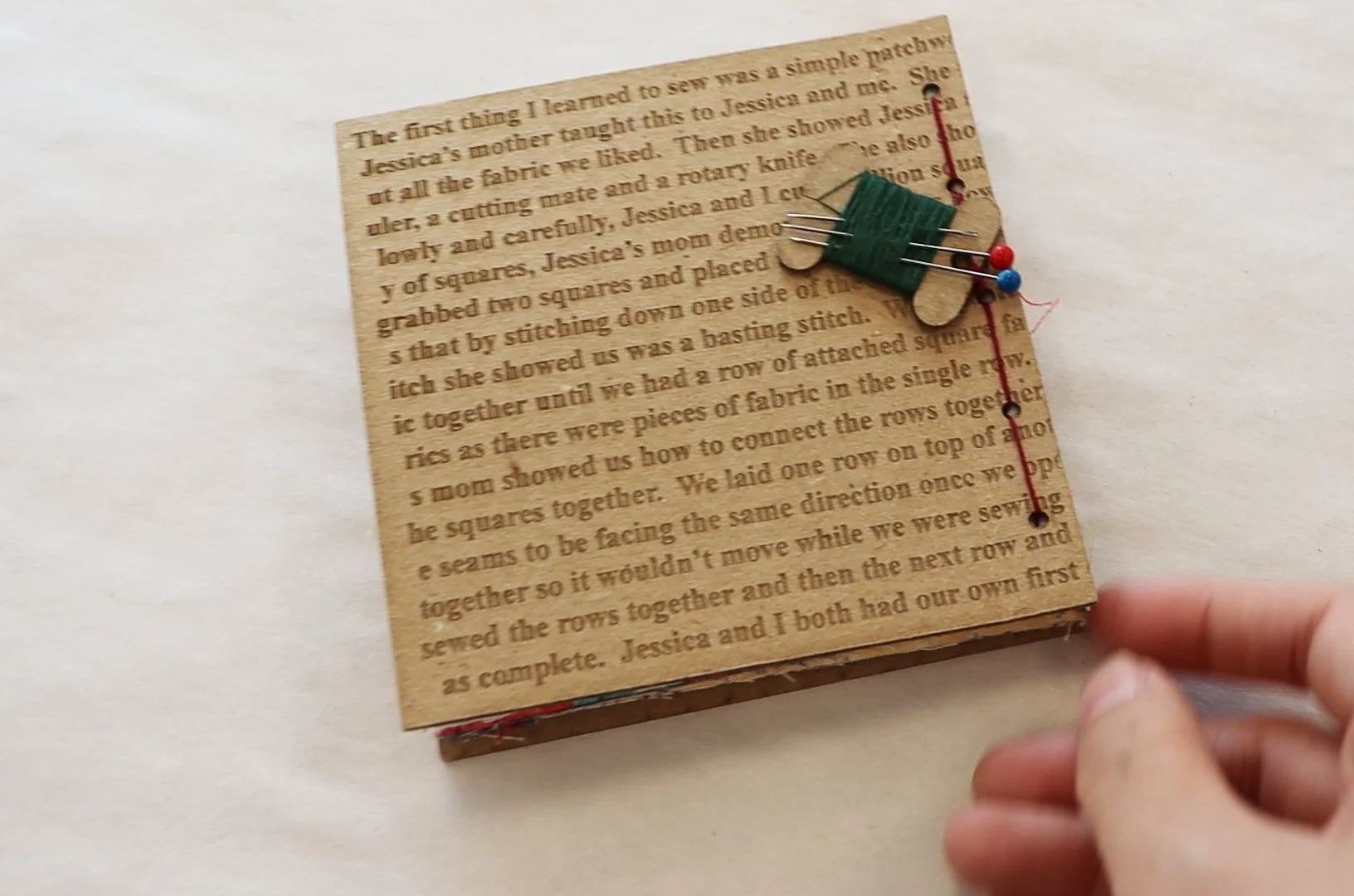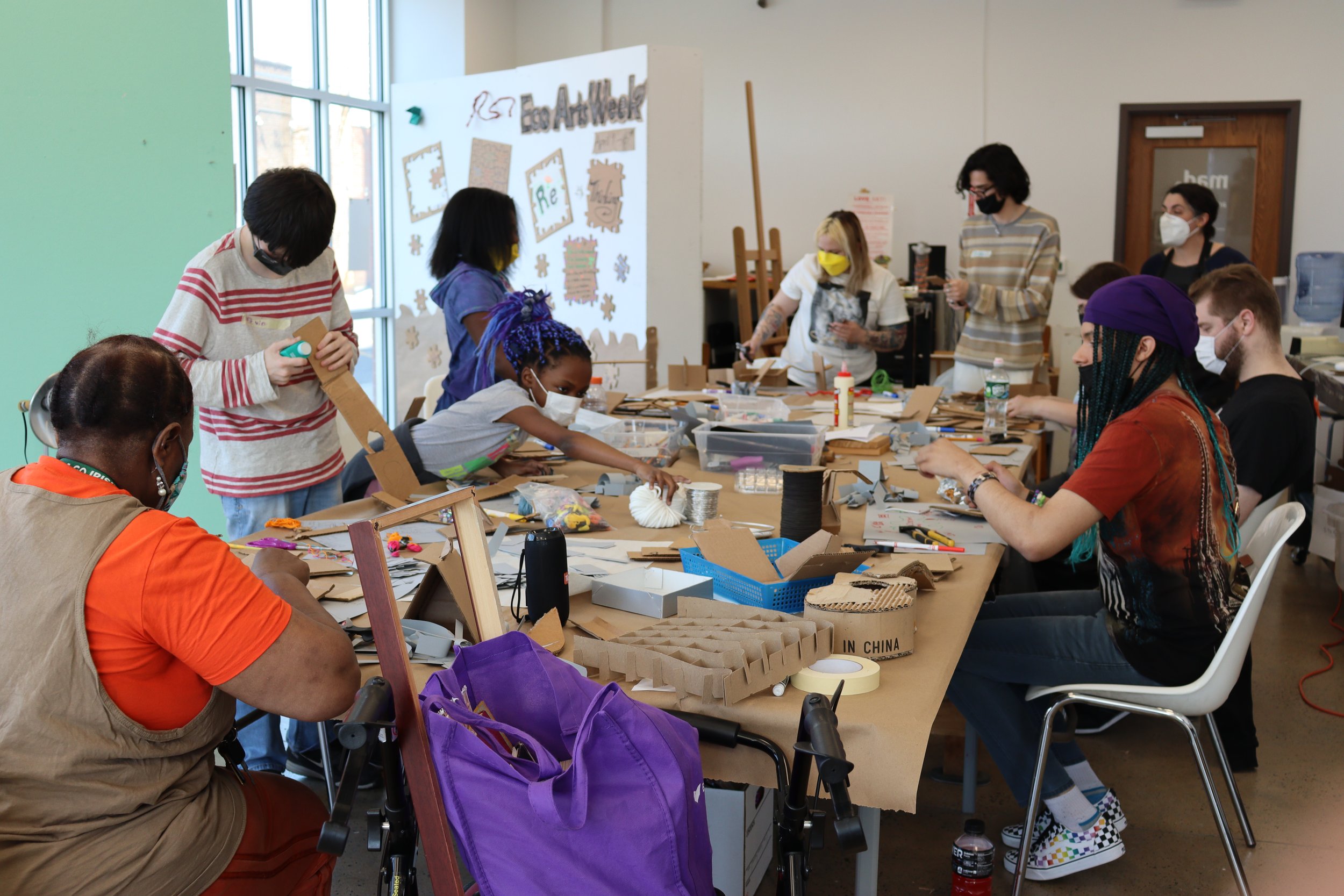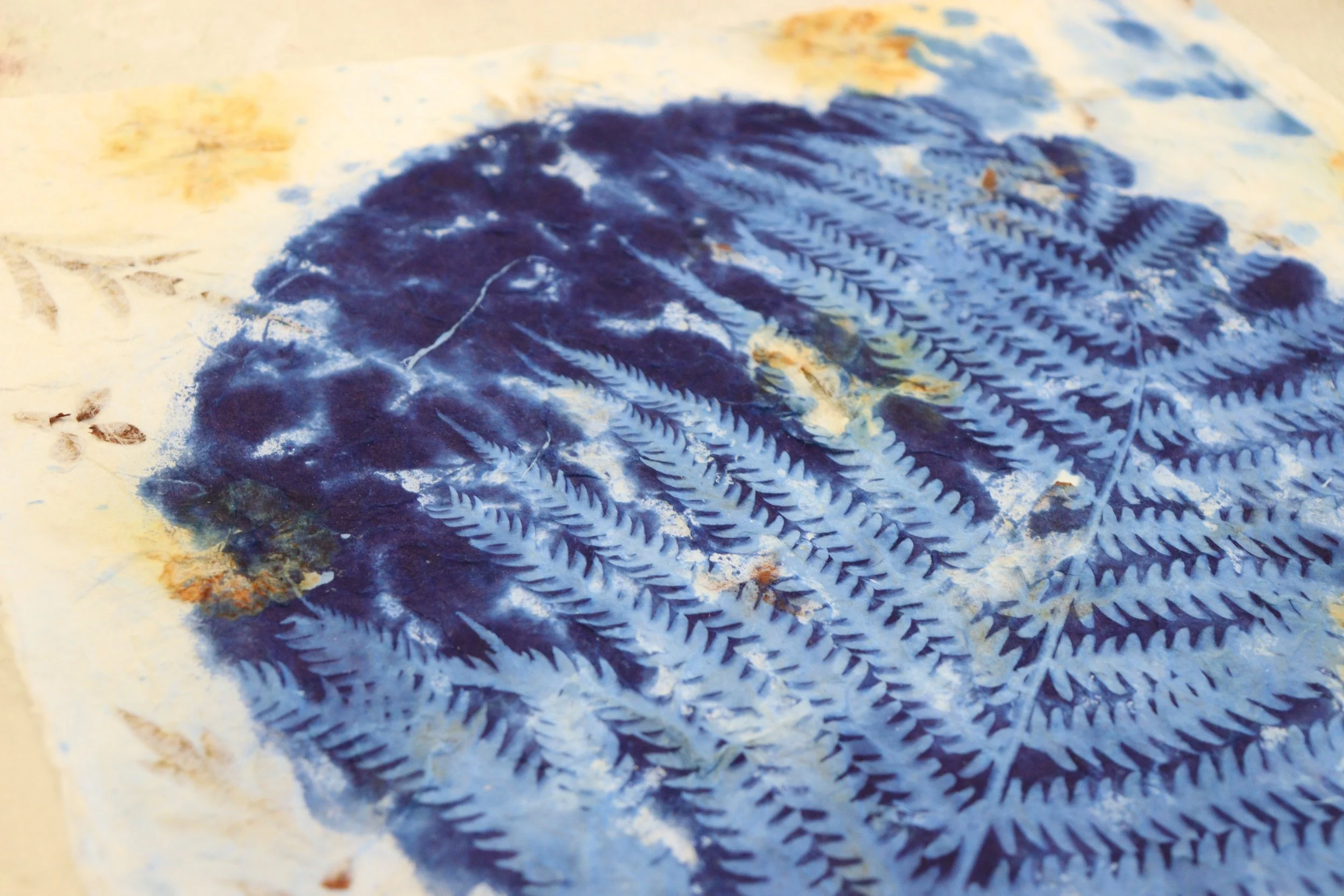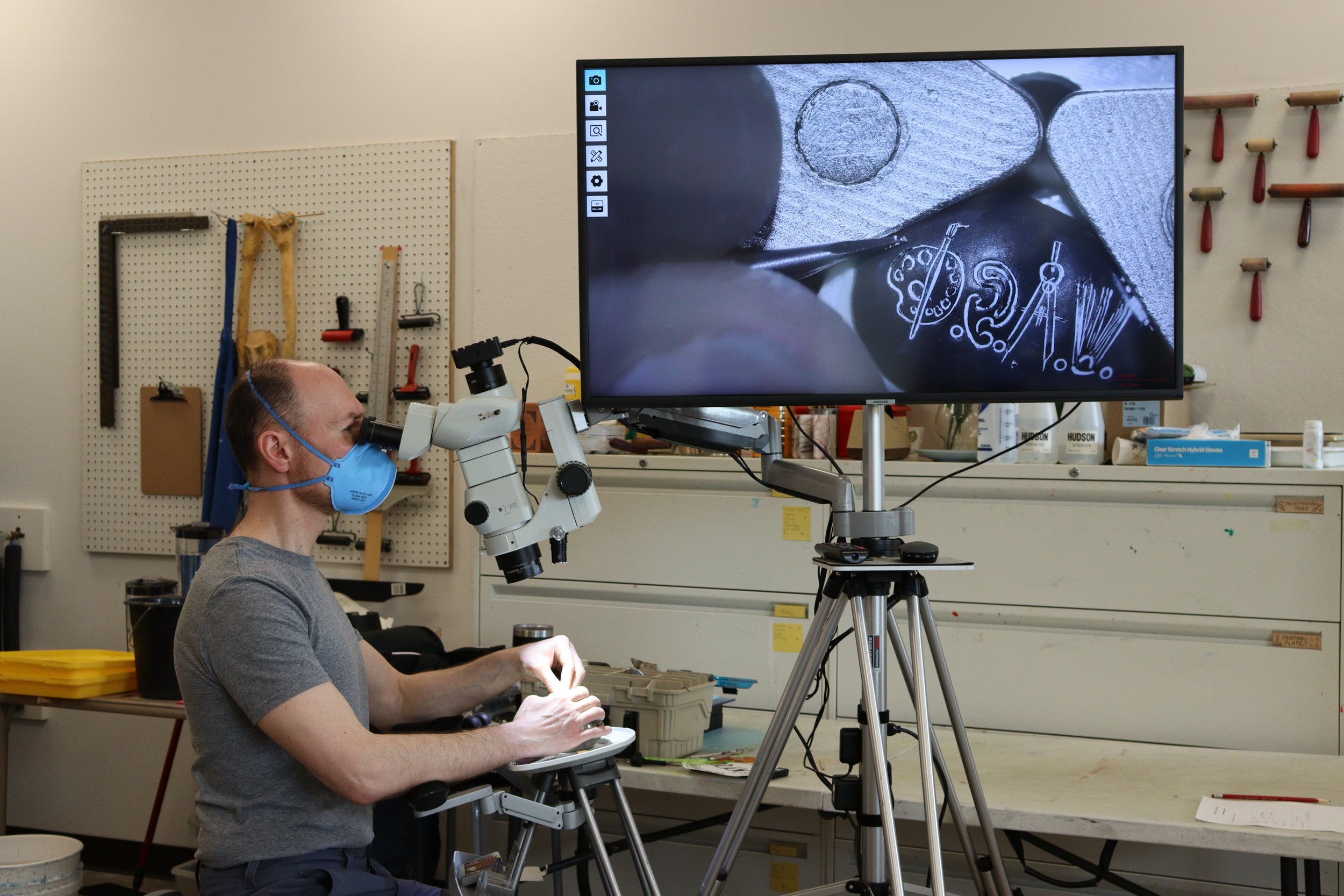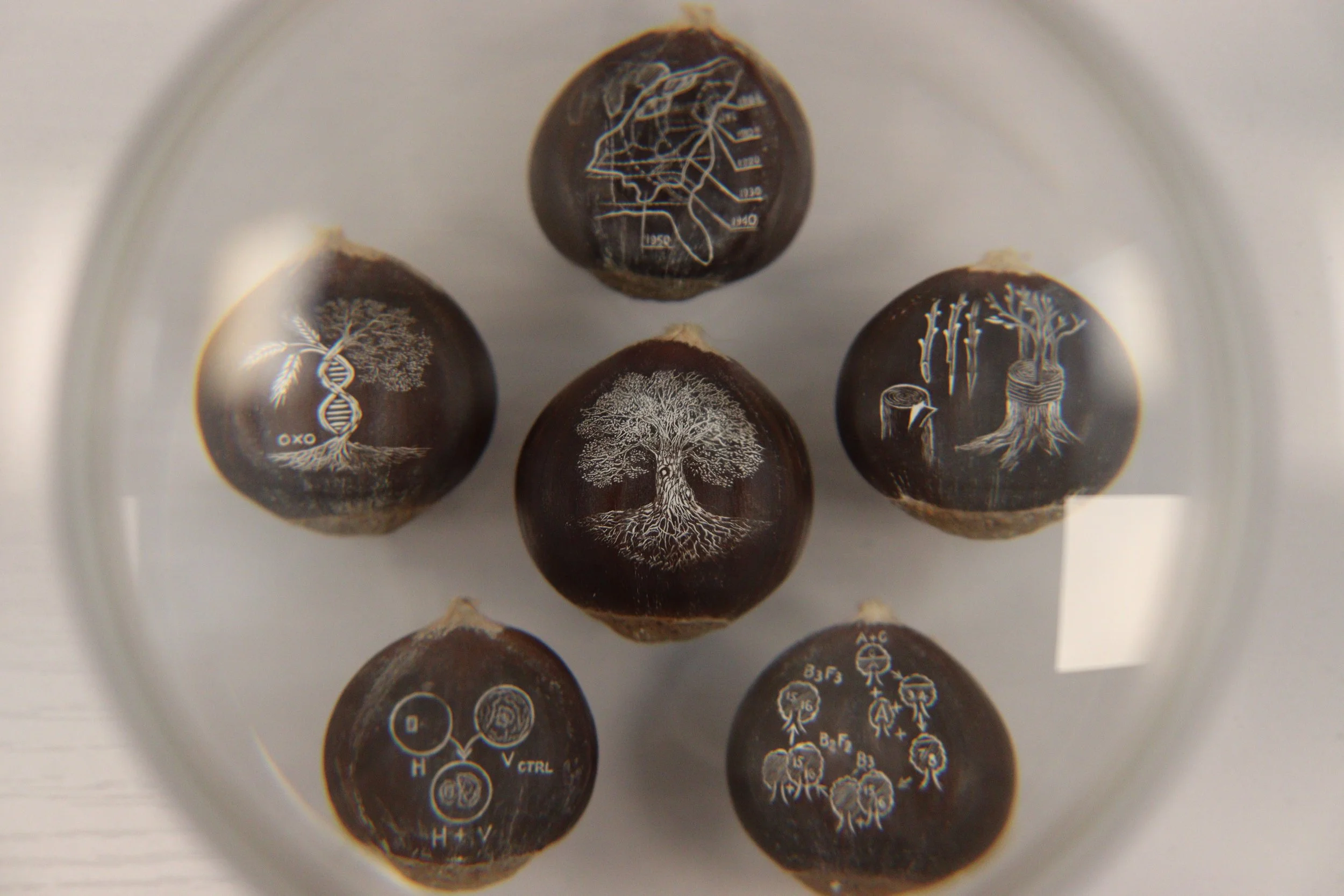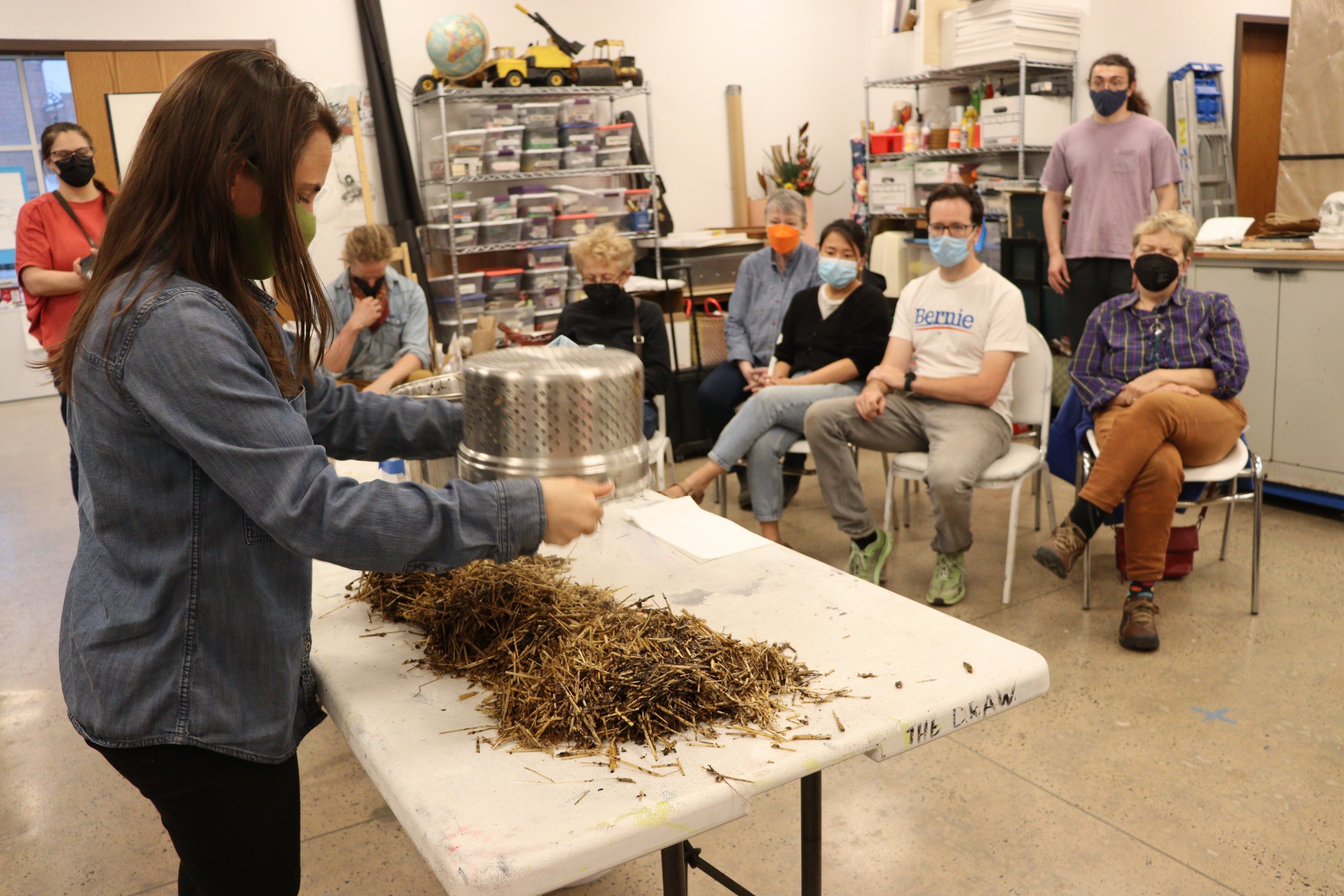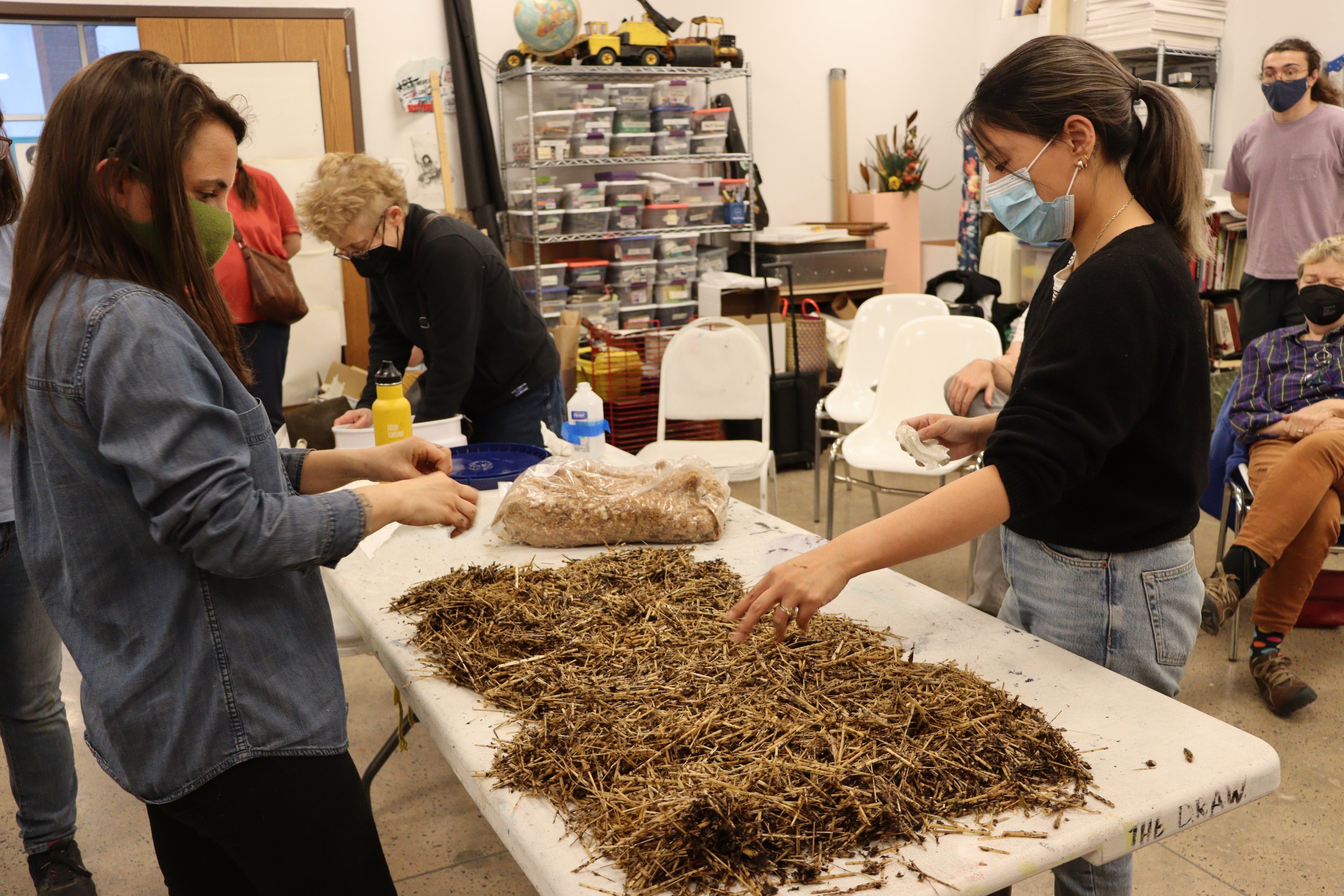By Colin Secore
Photos by Maxine Leu
Earth’s fragility has been the driving force in multiple efforts across the globe to preserve a rapidly deteriorating environment. Natural disasters are wreaking havoc across the globe. Millions of people are looking for ways to heal the Earth, particularly in ways that have visible benefits. Here at the D.R.A.W, art educators held an Eco Arts Week in mid-April. In a series of workshops, they brought their concerns to the table and invited people to make art. They provided participants with a direct outlet to address environmental concerns in a personal and imaginative way. Art is a universal language that engages people with matters they care about, and sometimes they don’t even know it. It’s not only a creative outlet, but also a very fun one.
Eco Arts Week kicked off with the April Art Yard Sale, which was on Saturday the 9th. An incredible variety of materials, media, books, and tools were all available in the main room for people to take. As always, people pay by donation, which leads to various displays of generosity. Most of the things being sold were already donated to begin with, but I met several individuals who simply wouldn’t leave until they felt as though they had paid enough for what they took. Despite how niche some of our wares were, a surprising number of people were able to find specific things they wanted. There was an equal benefit to the people who came to buy as well as the D.R.A.W. It was a very fulfilling event, in part because of the expression of selflessness.
Every corner of the space was occupied with interested buyers.
Lillian’s corner was alive with color and the perfect space for people to find artwork to buy.
Amidst the bustling energy of the sale, a local artist named Lillian set up a station in the other room, where she provided her woven arts, which were carefully crafted and colored. Paintings by her husband, Richie, were also available for sale, giving people the opportunity to support local artists and own some beautiful art. Lillian also bestowed on me and my peers our own “hot plates,” which are plush strips of quilt. We found that the unique color schemes of our hot plates matched our personalities.
Towards the tail end of the yard sale a young girl came inside. She was asked what she liked to make. She knew exactly what she wanted, and when we let her keep the markers and sketchbook she picked out, she was ecstatic. When her mother came to pick her up, the little girl literally screamed in excitement. It was exactly the kind of happiness we want to bring.
On April 10th, an art installation made by Maxine Leu was put up at the D.R.A.W., composed of recycled cardboard cut into puzzle pieces. From then til the end of Eco Arts Week, the artist invited people to write messages about how to live healthier lives and be more conscious of our environment.
The installation was on display even after the week ended, and I felt it was a big presence. Passerbys would see a wave of meaningful messages. There were wise takeaways from every corner. The artist left a little gnome modeled after herself with the show. It was a clever way of keeping herself present at the installation throughout the duration of it.
I made a piece myself, telling people to feel their feet on the ground, which is a method of grounding oneself and feeling more connected to the world around them.
In the afternoon of April 11th, Roberta Ziemba came to the D.R.A.W. and shared her latest obsession: homemade inks. She’s an artist who specializes in drawing from and upon the natural world. In her workshop, Roberta invited attendees to create their own ink from natural resources. Sticks, leaves, and acorns were all used to make ink, and then they dipped feather pens into it and created drawings on recycled paper. The result was several large, intricate, and beautifully colored works that are currently displayed in the D.R.A.W. space.
I wouldn’t have expected the inks made to be so rich in color!
The ability to make inks is a valuable skill for any artist—or even for anyone who just likes to crush things into liquid color.
Linda Weintraub is an artist, author, and art critic, with a long list of accomplishments, including many eco-friendly contributions. For Eco Arts Week, she hosted a workshop on the evening of April 11th in which attendees reflected on their outlook on the future of the Earth, personally rating our own optimism and pessimism.
“Artists are visionaries,” Linda said, referring to the artist’s power to convey complex concepts not through words, but through visual means. We were instructed to draw a line based on our self-evaluation of our outlook. The direction of the line would slope upwards if optimistic, and downwards if pessimistic, where the steepness determined the extremity. My own line was slightly optimistic.
Everyone’s lines were drastically different and telling.
Linda then encouraged us to add to our lines and express more specific thoughts. I used little running stick figures to represent my looping attempts to reach a higher level of optimism. When everyone had finished, we passed our lines to the right and interpreted the other person’s line. It was an interesting opportunity to pick everyone’s brains and reflect upon ourselves. I find that self-reflection on its own is invaluable, but doing it in a group with art was a fantastic opportunity. Linda herself engaged with each artist’s work in a deeply introspective way, turning over every stone and leaving no intention unnoticed.
On April 12th, Kate Patterson held a bookmaking workshop, with books composed of recycled materials. Kate herself is well versed in the process and owns her own bindery, right here in Kingston. Found objects were used to make books, with the dual intent of reducing what we buy as well as what we waste.
The covers of the made books were distinctly handmade and made them fashionable in a way that mass-produced books aren’t.
On April 13th, Kelly McGrath hosted a workshop focusing on upcycling various found objects into sculptures that tell personal narratives. The goal was to give the attendees a better sense of production and disposal when it comes to art and to stress the ever-important factor of recycling. Kelly is an artist and an educator who specializes in sculpture about biological processes. Kelly invited participants to assemble their own personal story through the found objects each person brought. Each sculpture was characterized by a depth that spoke to each artist’s individuality.
Each piece, like this one, was extraordinarily unique.
On April 14th, Lara Giordano, my boss, hosted a seed paper making workshop. Lara is a retired art teacher but continues to dedicate herself to art education and advocacy. She’s the founder of both the D.R.A.W. and the P.U.G.G. program. In her workshop, attendees created their own recycled paper with seeds embedded into them. Through this unique design the paper can be laid in a garden space to eventually grow and create natural beauty.
This is an example of what the paper looked like. Plants were intended to bloom from the surface and compliment the design.
Later on the 14th, Sergey Jivetin came to the D.R.A.W. and hosted a seed engraving workshop. Sergey has a background in jewelry design that lends itself to this extraordinary display. As an artist-miniaturist, what Sergey did was engrave seeds with detailed images based on the narrative between seeds and those who use them. He utilized an elaborate machine to carve these miniature works of art, and participants were invited to tell their own story, with which Sergey would use to carve an illustration.
Here, Sergey is designing a stylized logo for the D.R.A.W. The level of detail blows me away.
In the evening of the 14th, Luke Sarrantonio arrived at the D.R.A.W. to express the grand scale of help that fungi have done in the past and present. In this workshop, Luke takes attendees through a journey exploring the significance of fungi and the evidence of such through art of the past. This includes the tremendous role that fungi play in the environment. Luke himself is dedicated to developing educational programming around ecology and mycology. He has a degree in forest biology.
Luke is fascinated by the connections between all facets of nature and the processes that occur within them. His passion for the subject is invaluable.
On April 15th, Amanda Heidel came to the D.R.A.W. studio to represent Mushroom Shed. Amanda is a local artist and art educator committing herself to community projects and sculptures. Mushroom Shed is an ongoing community art project stationed in New Paltz. Inspired by how mushrooms decompose waste to create nutrients in the soil, making them powerhouses of the environment, Mushroom Shed strives to help people cultivate their own.
Amanda showed the steps of the mushroom life cycle and then presented us with one of the mushroom inoculation kits you can receive from a Mushroom Shed event. The whole room smelled like coffee and straw, due to the mushroom fertilizer. We were shown the process of preparing to grow a mushroom and how to go about raising it on our own. Attendees were eager to jump in, get their hands dirty, and be a part of the process.
It was a totally new experience for almost everyone there, and everyone jumped at the chance to be a part of it.
The D.R.A.W. received a pet mushroom as a result of the workshop, which one of the attendees named “Pearl.” I’ve taken a lot of notes on how to raise mushrooms, so Pearl will be in good hands as it grows. Attendees took away new opportunities for helping the environment through mushroom-based projects.
On April 16th, Hudson Valley Bee Habitat came to the D.R.A.W. They had worked with us previously in designing images for installations that would act as homes for bees. This time, they showed many participants how to create a small habitat for solitary bees. The importance of bees is understated in modern day life, and this handy skill of creating homes for them is invaluable in helping bees thrive. The Hudson Valley Bee Habitat is fully involved in promoting awareness about pollinators, and the solutions to their dying population.
As a lover of bees, it warms my heart to see people of all ages acquiring knowledge that will help pollinators for years to come.
On the afternoon of the 16th, I attended Maxine Leu and Lujiang Li’s print recycling workshop. Maxine, who created the aforementioned art installation, is an artist, educator, and environmentalist who hails from Taiwan. Lujiang Li is a printmaker, papermaker, and interior designer who was born in China. The pair demonstrated how we could better use our waste.
They presented us with various wrappers and garbage and encouraged us to engrave and print our own designs. They showed us their own examples of how they’ve recycled trash into attractive artworks. The attendees took to creating from garbage with vigor, and all were brimming with ideas. Printing with wrappers and other garbage works out surprisingly well, resulting in some beautiful prints. Finding an alternative use for waste is another step towards reshaping the trajectory of our environment.
The use of materials and color among the attendees was quite varied, and the resulting prints were beautiful.
Eco Arts Week encapsulated nature, give and take, recycling, the power of art, and the responsibility of Earth’s inhabitants. The reality is difficult, but with more people stepping up to do their part, the situation becomes less dire. There is hope, which I wholeheartedly believe in after seeing people’s willingness and interest to take important steps. A committed week to the cause is a catalyst for further action.

